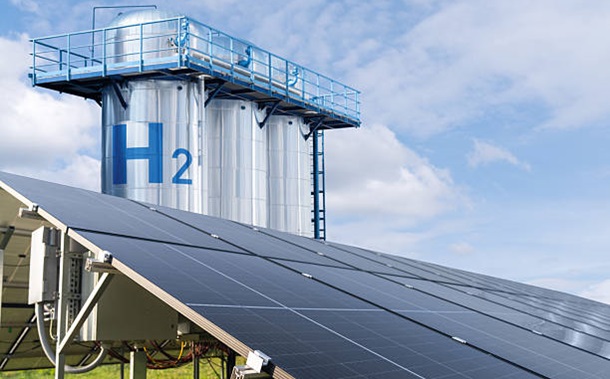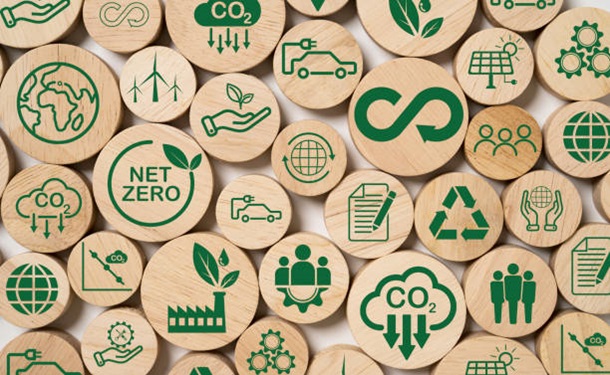Asymmetric Role of Economic Growth, Globalization, Green Growth, and Renewable Energy in Achieving Environmental Sustainability
Downloads
Doi:10.28991/ESJ-2024-08-02-05
Full Text:PDF
Downloads
Gaies, B., Nakhli, M. S., & Sahut, J. M. (2022). What are the effects of economic globalization on CO2 emissions in MENA countries?. Economic Modelling, 116, 106022. doi:10.1016/j.econmod.2022.106022.
Zhao, J., Taghizadeh-Hesary, F., Dong, K., & Dong, X. (2023). How green growth affects carbon emissions in China: the role of green finance. Economic Research-Ekonomska Istrazivanja, 36(1), 2090–2111. doi:10.1080/1331677X.2022.2095522.
Hao, L. N., Umar, M., Khan, Z., & Ali, W. (2021). Green growth and low carbon emission in G7 countries: How critical the network of environmental taxes, renewable energy and human capital is?. Science of the Total Environment, 752, 141853. doi:10.1016/j.scitotenv.2020.141853.
Danish, & Ulucak, R. (2020). How do environmental technologies affect green growth? Evidence from BRICS economies. Science of the Total Environment, 712, 136504. doi:10.1016/j.scitotenv.2020.136504.
Ojha, V. P., Pohit, S., & Ghosh, J. (2020). Recycling carbon tax for inclusive green growth: A CGE analysis of India. Energy Policy, 144. doi:10.1016/j.enpol.2020.111708.
Tawiah, V., Zakari, A., & Adedoyin, F. F. (2021). Determinants of green growth in developed and developing countries. Environmental Science and Pollution Research, 28(29), 39227–39242. doi:10.1007/s11356-021-13429-0.
Khochiani, R., & Nademi, Y. (2020). Energy consumption, CO2 emissions, and economic growth in the United States, China, and India: A wavelet coherence approach. Energy & Environment, 31(5), 886–902. doi:10.1177/0958305X19881750.
Pachiyappan, D., Ansari, Y., Alam, M. S., Thoudam, P., Alagirisamy, K., & Manigandan, P. (2021). Short and long-run causal effects of CO2 emissions, energy use, GDP and population growth: Evidence from India using the ARDL and VECM approaches. Energies, 14(24), 8333. doi:10.3390/en14248333.
Xiao, Z. (2009). Quantile cointegrating regression. Journal of Econometrics, 150(2), 248–260. doi:10.1016/j.jeconom.2008.12.005.
Sim, N., & Zhou, H. (2015). Oil prices, US stock return, and the dependence between their quantiles. Journal of Banking & Finance, 55, 1–8. doi:10.1016/j.jbankfin.2015.01.013.
Breitung, J., & Candelon, B. (2006). Testing for short- and long-run causality: A frequency-domain approach. Journal of Econometrics, 132(2), 363–378. doi:10.1016/j.jeconom.2005.02.004.
Qayyum, M., Yu, Y., Nizamani, M. M., Raza, S., Ali, M., & Li, S. (2023). Financial Instability and CO2 Emissions in India: Evidence from ARDL Bound Testing Approach. Energy & Environment, 34(4), 808–829. doi:10.1177/0958305X211065019.
Danish, Ozcan, B., & Ulucak, R. (2021). An empirical investigation of nuclear energy consumption and carbon dioxide (CO2) emission in India: Bridging IPAT and EKC hypotheses. Nuclear Engineering and Technology, 53(6), 2056–2065. doi:10.1016/j.net.2020.12.008.
Ahmed, M., Shuai, C., & Ahmed, M. (2022). Influencing factors of carbon emissions and their trends in China and India: a machine learning method. Environmental Science and Pollution Research, 29(32), 48424–48437. doi:10.1007/s11356-022-18711-3.
Uzair Ali, M., Gong, Z., Ali, M. U., Asmi, F., & Muhammad, R. (2022). CO2 emission, economic development, fossil fuel consumption and population density in India, Pakistan and Bangladesh: A panel investigation. International Journal of Finance & Economics, 27(1), 18–31. doi:10.1002/ijfe.2134.
Aslam, B., Hu, J., Shahab, S., Ahmad, A., Saleem, M., Shah, S. S. A., Javed, M. S., Aslam, M. K., Hussain, S., & Hassan, M. (2021). The nexus of industrialization, GDP per capita and CO2 emission in China. Environmental Technology & Innovation, 23, 101674. doi:10.1016/j.eti.2021.101674.
Wasti, S. K. A., & Zaidi, S. W. (2020). An empirical investigation between CO2 emission, energy consumption, trade liberalization and economic growth: A case of Kuwait. Journal of Building Engineering, 28, 101104. doi:10.1016/j.jobe.2019.101104.
Pejovič, B., Karadžič, V., Dragaševič, Z., & Backovič, T. (2021). Economic growth, energy consumption and CO2 emissions in the countries of the European Union and the Western Balkans. Energy Reports, 7, 2775–2783. doi:10.1016/j.egyr.2021.05.011.
Munir, Q., Lean, H. H., & Smyth, R. (2020). CO2 emissions, energy consumption and economic growth in the ASEAN-5 countries: A cross-sectional dependence approach. Energy Economics, 85, 104571. doi:10.1016/j.eneco.2019.104571.
Li, S., Yu, Y., Jahanger, A., Usman, M., & Ning, Y. (2022). The Impact of Green Investment, Technological Innovation, and Globalization on CO2 Emissions: Evidence from MINT Countries. Frontiers in Environmental Science, 10, 156. doi:10.3389/fenvs.2022.868704.
Jahanger, A. (2022). Impact of globalization on CO2 emissions based on EKC hypothesis in developing world: the moderating role of human capital. Environmental Science and Pollution Research, 29(14), 20731–20751. doi:10.1007/s11356-021-17062-9.
Acheampong, A. O. (2022). The impact of de facto globalization on carbon emissions: Evidence from Ghana. International Economics, 170, 156–173. doi:10.1016/j.inteco.2022.03.002.
Huo, C., Hameed, J., Sharif, A., Albasher, G., Alamri, O., Alsultan, N., & Baig, N. ul-ain. (2022). Recent scenario and nexus of globalization to CO2 emissions: Evidence from wavelet and Quantile on Quantile Regression approach. Environmental Research, 212, 113067. doi:10.1016/j.envres.2022.113067.
Mehmood, U., Tariq, S., Ul-Haq, Z., & Meo, M. S. (2021). Does the modifying role of institutional quality remains homogeneous in GDP-CO2 emission nexus? New evidence from ARDL approach. Environmental Science and Pollution Research, 28(8), 10167–10174. doi:10.1007/s11356-020-11293-y.
Jayasinghe, M., & Selvanathan, E. A. (2021). Energy consumption, tourism, economic growth and CO2 emissions nexus in India. Journal of the Asia Pacific Economy, 26(2), 361–380. doi:10.1080/13547860.2021.1923240.
Kuldasheva, Z., & Salahodjaev, R. (2023). Renewable Energy and CO2 Emissions: Evidence from Rapidly Urbanizing Countries. Journal of the Knowledge Economy, 14(2), 1077–1090. doi:10.1007/s13132-022-00971-6.
Rehman, A., Alam, M. M., Ozturk, I., Alvarado, R., Murshed, M., Işık, C., & Ma, H. (2023). Globalization and renewable energy use: how are they contributing to upsurge the CO2 emissions? A global perspective. Environmental Science and Pollution Research, 30(4), 9699–9712. doi:10.1007/s11356-022-22775-6.
Balsalobre-Lorente, D., Contente dos Santos Parente, C., Leití£o, N. C., & Cantos-Cantos, J. M. (2023). The influence of economic complexity processes and renewable energy on CO2 emissions of BRICS. What about industry 4.0? Resources Policy, 82, 103547. doi:10.1016/j.resourpol.2023.103547.
Adebayo, T. S., & Ullah, S. (2024). Towards a sustainable future: The role of energy efficiency, renewable energy, and urbanization in limiting CO2 emissions in Sweden. Sustainable Development, 32(1), 244–259. doi:10.1002/sd.2658.
Usman, O. (2023). Renewable energy and CO2 emissions in G7 countries: does the level of expenditure on green energy technologies matter? Environmental Science and Pollution Research, 30(10), 26050–26062. doi:10.1007/s11356-022-23907-8.
Madaleno, M., & Nogueira, M. C. (2023). How Renewable Energy and CO2 Emissions Contribute to Economic Growth, and Sustainability”An Extensive Analysis. Sustainability, 15(5), 4089. doi:10.3390/su15054089.
Adebayo, T. S., Ağa, M., & Kartal, M. T. (2023). Analyzing the co-movement between CO2 emissions and disaggregated nonrenewable and renewable energy consumption in BRICS: evidence through the lens of wavelet coherence. Environmental Science and Pollution Research, 30(13), 38921–38938. doi:10.1007/s11356-022-24707-w.
Mamkhezri, J., & Khezri, M. (2023). Assessing the spillover effects of research and development and renewable energy on CO2 emissions: international evidence. Environment, Development and Sustainability, 26(3), 7657–7686. doi:10.1007/s10668-023-03026-1.
Kang, S. H., Islam, F., & Kumar Tiwari, A. (2019). The dynamic relationships among CO2 emissions, renewable and non-renewable energy sources, and economic growth in India: Evidence from time-varying Bayesian VAR model. Structural Change and Economic Dynamics, 50, 90–101. doi:10.1016/j.strueco.2019.05.006.
Gu, J., Renwick, N., & Xue, L. (2018). The BRICS and Africa's search for green growth, clean energy and sustainable development. Energy Policy, 120, 675–683. doi:10.1016/j.enpol.2018.05.028.
Saleem, H., Khan, M. B., & Mahdavian, S. M. (2022). The role of green growth, green financing, and eco-friendly technology in achieving environmental quality: evidence from selected Asian economies. Environmental Science and Pollution Research, 29(38), 57720–57739. doi:10.1007/s11356-022-19799-3.
Sharif, A., Mishra, S., Sinha, A., Jiao, Z., Shahbaz, M., & Afshan, S. (2020). The renewable energy consumption-environmental degradation nexus in Top-10 polluted countries: Fresh insights from quantile-on-quantile regression approach. Renewable Energy, 150, 670–690. doi:10.1016/j.renene.2019.12.149.
- This work (including HTML and PDF Files) is licensed under a Creative Commons Attribution 4.0 International License.



















